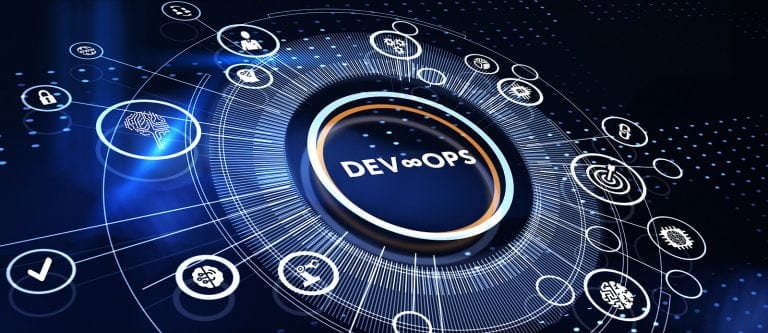Once again we had the opportunity to play 2 Phoenix Project DevOps simulations with senior managers from a global company. This document reveals their key behavioral takeaways. How many of these do you or your management team need to adopt?
Table of Contents
ToggleCommon themes for these senior management sessions seem to be ‘To gain a better understanding of what DevOps is’? ‘How it differs from Agile’ (as many managers seem to think that investing in DevOps means dis-investing in Agile), and ‘What it means to managers’ (the last is because of the ugly rumors and whispers about managers having to ‘Foster a DevOps Culture’ & ‘Create collaborative teams’).
The growing senior management interest is certainly justified when you consider this finding from the 2017 State of DevOps report: ‘By 2020, half of the CIOs who have not transformed their teams’ capabilities will be displaced from their organizations’ digital leadership teams’. This was also highlighted by Robert Stroud, DevOps Thought Leader and former Analyst at Forrester ‘To unlock the promise of DevOps, CIOs must lead and support a cultural change within their technology management organization’.
But how to do that? What did these Leaders discover?….read on.
The Phoenix Project simulation
The Phoenix Project business simulation game, based upon the book with the same name, is a dynamic, classroom-based, interactive workshop. Players on a team are assigned roles and responsibilities and placed in a realistic environment in which they must effectively communicate and collaborate applying DevOps practices and principles to succeed.
I won’t describe in detail what happens in the simulation, suffice to say that in the initial round statements such as ‘chaos’ , ‘no flow’, ‘unclear roles’, ‘silos’, ‘no visibility’, ‘just like reality!’ are thrown around during reflection.
Key takeaways?

I always find it enlightening listening to the final informal discussion at the end of the day, just before delegates retire to the bar for some liquid anesthesia after their intensive experiences in the simulation. By now the flip-overs containing the delegates findings have been taken down; simulation materials packed away. Groups of managers make their way out of the room or remain seated, opening the day’s emails on their telephones. It is at this moment when the most senior delegates often get together and share their own personal takeaways with each other. ‘It wasn’t always fun to have the CEO in the simulation jumping up and down ranting on about share price, revenue, reputation, growth – but very recognizable!’ began the discussion.
These were some of the ‘dawning highlights’ during the end of the day dialogue. See how many you or your management team might recognize. At the end of the session there was a clear, shared recognition that:
- the massive increase in demands from the business arising from so called ‘Digital Transformation’ is causing IT managers to ‘place additional strain on IT teams’, compounding resistance to changing to new ways of working;
- the ‘new’ framework – ‘Agile’ or ‘DevOps’ has become the goal! ‘We are ‘Implementing’ Agile or DevOps’ –Focusing on the training, the courses and the certification but not on the underlying behaviors and culture change. ‘A fool with a tool is still a fool – we are using the frameworks as tools we can install’;
- whilst managers put pressure on teams to do more and faster, they have not ensured that teams are ‘empowered’ to reserve WIP (Work-in-Progress) for ‘Learning, sharing and creating cross functional teams’, or for ‘working on an improvement backlog of impediments’. Managers are not explicitly ‘fostering a culture of reflection and experimentation’.
- managers do not do enough to ‘remove the perception of blame when things go wrong or cannot be delivered on time’, and have not created a ‘psychologically safe’ environment to give open feedback’;
- ‘teams have different levels of maturity and require different leadership styles to help mature at the right pace’. Managers must learn to apply situational and coaching leadership.
- Managers will need to have patience to allow teams to mature at a pace that matches their current skills and capabilities – ‘assessing team maturity is an important first step’;
- It will take ‘courage’ for managers to let teams reserve time for learning and experimenting and for ‘fail fast’ – ‘fail fast must not be coupled with blame but with ‘learn fast’ and improve’;
- all must understand ‘value’ – the ‘why’ in terms of not only business features and expected benefits, but also in terms of the impact of issues and technical debt. ‘Team backlogs must all be understood in terms of impact on business value to help teams prioritize’;
- their needs to be more focus on ‘Value stream mapping’ – ensuring end-to-end capabilities, flow and the removal of barriers and constraints. ‘We need to make these value streams visible, as well as the impediments and have an end-to-end focus on removing this waste and increasing flow’ – this means that separate teams must have the time to get together to explore this, together with the product owners;
- the solution cannot be found in IT alone. ‘We need to play this simulation with the executive leadership teams and the business! They also need to understand the importance of reserving WIP for continual learning, experimentation and improvement, which meanssacrificing volume of change in the short term to enable significant longer term benefits. It will take courage from business and IT leadersto reserve scarce resources for this’.
‘When you boil it down…’
‘…It all comes down to what you called ‘Attitude, Behavior & Culture’ (ABC)’ said one manager. Indeed, It is our findings from interacting with literally thousands of organizations across the globe that ‘ABC is the number 1 success or fail factors for people transformations’. These types of transformations are all about changing behaviors. Behavior change starts with the attitude change – belief, buy-in, recognition of the need, answering questions like ‘why should I…’? ‘What is in it for me’? ‘What if I don’t’? Culture change starts to occur when there is a broad based, sustainable, consistent recognition that ‘this is the new way of behaving’, ofLeaders not just ‘talking-the-talk, but ‘walking the talk’ – leading by example, is one of the most powerful ways of starting the ball rolling.
In this 3 hour simulation workshop we had clearly made a shift in senior management ‘Attitudes’, the question is, will they now translate this into ‘Leadership behaviors’?
Often in these types of Transformations we think it is always somebody else who has to change. However change starts with yourself taking ownership to make change happen. As Ghandi said ‘you must be the change you want to see happen in the world’ – this value equally applies to DevOps teams – the need to take courage and ownership for continual learning, experimentation and improvement within the team.
I look forward to reaching out to this organization in a few months to discover more about their journey.




